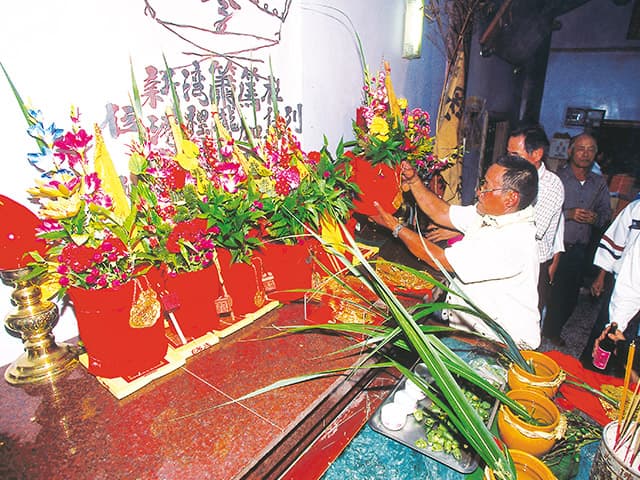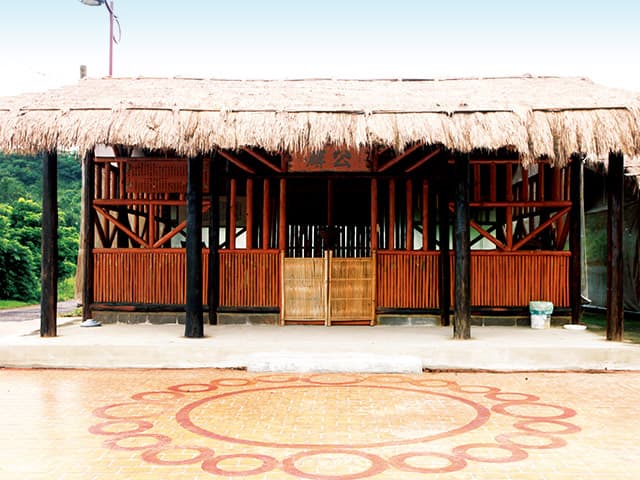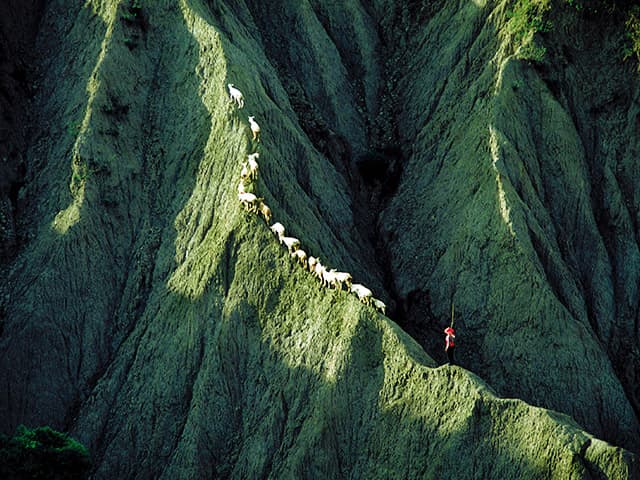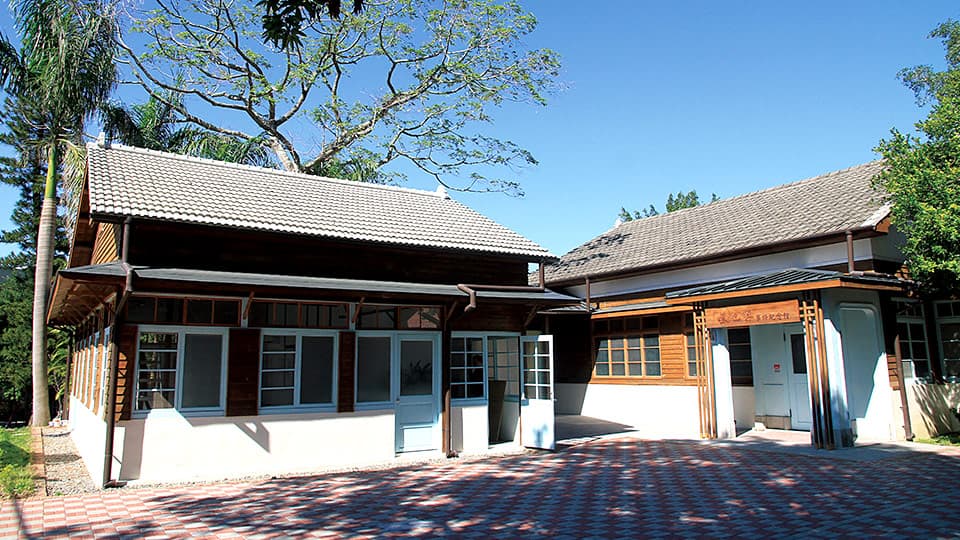Discover Siraya
Discover Siraya
The Siraya National Scenic Area is brimming with Aboriginal culture, boasting some of the most well preserved traditional culture.
The Siraya National Scenic Area is brimming with Aboriginal culture, boasting some of the most well preserved traditional culture, celebrations, and faith.
The Siraya people are an Aboriginal tribe that once occupied the plains in the Tainan area, living a simple agricultural life in a matriarchal society. Due to the warm Taiwanese climate, the Siraya people generally went naked, until in the 17th century they began covering wearing loincloths.
In the latter 19th century, both the males and females took to waring Chinese-style tops and loose-fitting pants. When the Chinese began immigrating to the area, they started developing the land, bringing with them advanced agricultural technologies; they established irrigation systems and started planting rice, and due to their superior agricultural prowess, the Chinese gradually pushed the Siraya out.
As the numbers of Chinese grew, the Siraya were forced to move, and some began to intermarry with local Chinese, gradually being assimilated into the community. Many traditional customs were lost this way, with only a few ceremonies and religious customs surviving to today.
Of particular note amongst these is the "Night Festival," an iconic part of Siraya religious culture and evidence of the people's determination to hand down their culture to future generations.
Read More
Celebrity Stories
Hatta Yoichi
During the Japanese occupation era, the Chianan plain, although with an open terrain, was marred by unirrigatable land for lacking water resources. In 1910, the Japanese technician Hatta Yoichi, at the age of only 24 then, arrived in southern Taiwan to join the hard and winding survey and design work for developing the Wu-Shan-Tou Reservoir and Chia-Nan Irrigation. Through ten years of hardworking efforts, the project of unprecedented Hatta Yoichiscale finally broke ground in 1920. With yet another ten years of hard work, the enormous project was finally completed.
The completion of the Chia-Nan Irrigation allowed the agricultural crop yields to rise by two to five folds, propelling the Chianan Plain to be the most important grain producing area in Taiwan. In 1941, as the war in the Pacific accelerated, Hatta Yoichi was summoned to return to Japan in May 1942, but unfortunately the ship he was aboard was sunken by American submarines at sea. His remains were repatriated to Taiwan, as he was laid to rest at the Wu-Shan-Tou Reservoir, a place where he lived for 32 years. On July 12, 2007, the Taiwan representative stationed in Japan Hsu Shih-kai bestowed a commemorative plaque in honor of Hatta Yoichi on behalf of the president, commemorating his contribution to Taiwan's agriculture, and the award was received by Hatta Yoichi's daugher-in-law. Hatta Amiko, and his grandson, Hatta Yoichi.
The Hatta Yoichi Memorial Hall
With a "Hatta Technician Memorial Hall" built in the Wu-Shan-Tou Reservoir Scenic Area, together with his tomb and a commemorative bronze bust also located in the scenic area, the Hydrological Society routinely stages a "Hatta Commemorative Memorial" performance on the anniversary of his passing every year; there is also a "Hatta's Friendship Association" founded in Japan, which stands as a witness to how the later generations continue to commemorate and respect him.
On May 8 of every year,the anniversary of the Japanese hydrological engineer, Mr. Hatta Yoichi, who designed and built the Chiana Wu-Shan-Tou Reservoir and Chia-Nan Irrigation, the Chianan Farmland Hydrological Association especially stages a "Hatta and Taiwan's Water Resources" presentation, a commemorative memorial and musical concerts at the Wu-Shan-Tou Reservoir to express respect and commemoration of technician Hatta, while a family commemorative group comprised of Hatta's descendents and friends travels from Japan to attend the annual commemorative event.
Yu Ching-fang
The Ta-pa-ni Incident, which took place in 1915, was one of the Taiwanese armed rebellions against the Japanese rule, and one that commanded the most in scale and of lives sacrificed during the Japanese occupation era. It was also a landmark incident that the Taiwanese had united through religious force to rebel against the Japanese rule. For how the revolution was planned at the City God Temple in Tainan City's Silai Temple, it was also referred to as the "Silai Temple Incident;" and with the figurehead of the revolt being Yu Ching-fang (1879 - 1916), the incident was also referred to as the "Yu Ching-fang Incident."
While rallying for anti-Japanese movement in the name of the divine deity at Tainan City's "Silai Temple," Yu Ching-fang later gained the acquaintance of Luo Jun of Taichung and Jiang Ding of Nanzih, who conspired to form the "Reservoiring Mercy Kingdom," and to hypnotize their followers with religious means by claiming that the Japanese's fate had come to an end after twenty years' rule, and he was summoned by the City God to be the "Emperor of the Taiwanese." He further proclaimed that China was to send a large enforcement of troops for support. Unfortunately, the scheme was discovered by the Governor's Office while it was still at the strategizing stage, and Yu Ching-fan soon fled to the mountain when the scheme was exposed. There he fought with the Japanese troops at Ta-pa-ni (today's Yujing Dist.), and then was lured out of the mountain and arrested four years later. Since then, the Taiwan Governor's Office began to eradicate the issue of religious belief in Taiwan so as to avoid any such revolt from occurring, and to detour the Taiwanese people's anti-Japanese movements, from the armament scheme to the social and political movements.
The Ta-pa-ni Memorial Park
The Ta-pa-ni Memorial Park is situated at the crossroads of Tai #20 Road and Tai #84 Road, and a gateway to Yujing Dist.. It is currently the location of a commemorative tablet, and had been the killing field where the Japanese slaughtered the anti-Japanese revolutionists. The Yujing Town Office has erected a landmark that takes the shape of a gigantic apple mango in the Memorial Park, thus combining its featured mango crop, which has also become an optimal identification icon for entering Yujing Dist..
The Yu Ching-fang Anti-Japanese Memorial Tablet Park
The Yu Ching-fan Memorial Tablet, situated at the peak of the Hutou Mountain to the east of Yujing Dist., invokes the future generations to commemorate and emulate the martyrs' rebelling against the Japanese rule. The peak offers an excellent panoramic view for taking in the beautiful sights and sounds of Yujing Dist..
Yang Kui
Yang Kui (1905 - 1985), given name Yang Kuei, was a native of Sinhua, Tainan City. Yang Kui devoted his entire life to working with his hands for grassroots literature and "running with his two feet working for the social movement." His life was marked by "his stupendous poetry, writing with a hoe." Outside of writing, working in social movements, and serving prison sentences, he enjoyed a simple, rustic life of raising flowers as his livelihood.
Going abroad to study in Tokyo in 1924, and upon quitting his study at the School of Literature and Art, University of Japan and returning to Taiwan, he soon joined the Taiwan Farmers Cooperative and the Taiwan Cultural Foundation, through which he spearhead the social movements. During the Japanese occupation era, he was imprisoned for a total of ten times for resisting the colonial government. In 1934, he claimed notoriety in the literature circle with his entry in the "Newspaper Deliverer" (with the Japanese title, the "Newspaper Deliverer" was named second place by the Tokyo "Literature Critics Awards," while first prize fell through).
He later served as the Japanese language editor for the "Taiwan Literature and Arts" publication, and in 1935 collaborated with his wife Yeh Tao to launch the "New Taiwan Literature" magazine. During the imperial colonialization period, he leased land property to launch "Shou Yang Plantation." Soon after the war ended, he founded the "I Yang Weekly Paper," and was editor-in-chief for the "Peace Daily's" "New Literature" column, "Cultural Exchange" column; "Taiwan Li Hsing Newspaper's" "New Literature and Arts" column and "Taiwan Literature Publications" to name a few, that were in in-depth exchange with Chinese authors evacuating to Taiwan. Following the Feb. 28th Incident, Yang Kui and his wife Yeh Tao were arrested and jailed for four months.
He was later arrested on April 6, 1949 for drafting the "Peace Declaration," and was sentenced to twelve years in prison. During his decade-long incarceration on Green Island Prison, his Mandarin works had become more mature, with most of his works published in prison, including the "New Life" billboard and the "New Life Monthly;" he had also created a number of plays that were staged by the inmates and in street performances. After being discharged from prison, he borrowed money to cultivate "Dong Hai Garden" in Taichung's DaDu Mountain, and continued to take to his profession as a flower grower. His novel, "The Unbeatable Rose," later renamed as "The Unstoppable Ray of Spring," written during his incarceration on Green Island, was excerpted into middle school Mandarin textbooks in 1976, which marked him as the first renowned Taiwanese author whose works were excerpted into textbooks.
The Yang Kui Literature Memorial Hall
To commemorate Yang Kui, the Sinhua Town Office has launched a "Yang Kui Literature Hall" at the old land administration office in the old downtown street, which has been designed by the architectural designer Liu Kuo-tsang acclaimed for his "Venice Architectural Biennial Exhibition," offering a modern and bright exhibition venue that houses luxurious cultural artifacts in a setting rich with literary flair that beckons visitors to gain a firsthand perception.










